-
 Bitcoin
Bitcoin $117900
0.31% -
 Ethereum
Ethereum $3766
0.28% -
 XRP
XRP $3.176
-0.31% -
 Tether USDt
Tether USDt $1.000
0.00% -
 BNB
BNB $795.6
1.51% -
 Solana
Solana $186.8
-1.09% -
 USDC
USDC $0.9999
-0.01% -
 Dogecoin
Dogecoin $0.2353
-1.33% -
 TRON
TRON $0.3226
1.49% -
 Cardano
Cardano $0.8172
-1.08% -
 Sui
Sui $4.178
3.06% -
 Hyperliquid
Hyperliquid $43.05
-3.39% -
 Stellar
Stellar $0.4367
-0.57% -
 Chainlink
Chainlink $18.62
1.47% -
 Hedera
Hedera $0.2828
6.63% -
 Bitcoin Cash
Bitcoin Cash $584.7
5.65% -
 Avalanche
Avalanche $24.81
2.53% -
 Litecoin
Litecoin $112.8
-0.88% -
 UNUS SED LEO
UNUS SED LEO $8.975
-0.08% -
 Shiba Inu
Shiba Inu $0.00001395
-1.07% -
 Toncoin
Toncoin $3.285
-1.05% -
 Ethena USDe
Ethena USDe $1.001
0.01% -
 Polkadot
Polkadot $4.123
0.76% -
 Uniswap
Uniswap $10.49
-0.18% -
 Monero
Monero $326.5
0.14% -
 Dai
Dai $0.9999
-0.02% -
 Bitget Token
Bitget Token $4.576
0.34% -
 Pepe
Pepe $0.00001247
-1.55% -
 Cronos
Cronos $0.1400
3.77% -
 Aave
Aave $295.1
-0.73%
BTC trend tracking tactics: moving average crossover and K-line confirmation
Use moving average crossover and K-line confirmation to track BTC trends, identifying entry/exit points and confirming overall market direction.
Jun 09, 2025 at 02:28 am
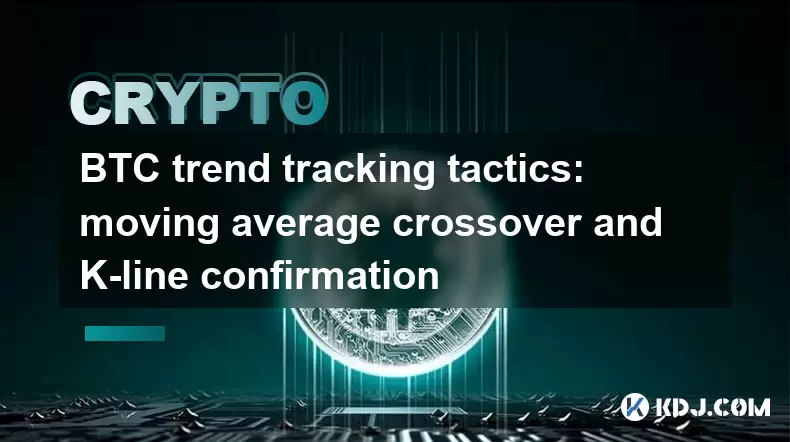
BTC trend tracking tactics: moving average crossover and K-line confirmation
In the world of cryptocurrency, tracking the trend of Bitcoin (BTC) is essential for traders and investors looking to make informed decisions. Two popular methods used for this purpose are the moving average crossover and K-line confirmation. These techniques can help identify potential entry and exit points in the market, as well as confirm the overall trend of BTC. In this article, we will delve into these tactics, exploring how they work and how to apply them effectively.
Understanding Moving Average Crossover
The moving average crossover is a widely used technical analysis tool that helps traders identify potential trend changes in BTC. It involves the use of two moving averages: a short-term moving average and a long-term moving average. The short-term moving average is typically calculated over a shorter period, such as 50 days, while the long-term moving average is calculated over a longer period, such as 200 days.
When the short-term moving average crosses above the long-term moving average, it is known as a "golden cross." This is considered a bullish signal, indicating that the trend of BTC may be shifting from bearish to bullish. Conversely, when the short-term moving average crosses below the long-term moving average, it is known as a "death cross." This is considered a bearish signal, indicating that the trend of BTC may be shifting from bullish to bearish.
Applying Moving Average Crossover in BTC Trading
To apply the moving average crossover strategy in BTC trading, follow these steps:
- Choose the appropriate moving averages: Select the short-term and long-term moving averages that suit your trading style. Common choices include the 50-day and 200-day moving averages, but you can experiment with different periods to find what works best for you.
- Monitor the crossover: Keep an eye on the price chart of BTC and watch for the short-term moving average to cross above or below the long-term moving average. This will indicate a potential trend change.
- Confirm the signal: While the moving average crossover can be a powerful tool, it is always a good idea to confirm the signal with other indicators or analysis methods. This can help reduce the risk of false signals.
- Take action: Once you have confirmed the signal, you can take action based on your trading strategy. For example, if you see a golden cross, you may consider entering a long position in BTC. If you see a death cross, you may consider exiting your long position or entering a short position.
Understanding K-Line Confirmation
K-line confirmation is another popular technique used to track the trend of BTC. K-lines, also known as candlestick charts, provide a visual representation of price movements over a specific period. Each K-line consists of a body and wicks (or shadows) that indicate the opening, closing, high, and low prices for that period.
By analyzing the patterns formed by K-lines, traders can gain insights into the sentiment and potential direction of BTC. Some common K-line patterns include the bullish engulfing pattern, the bearish engulfing pattern, the hammer, and the shooting star. These patterns can help confirm the trend identified by the moving average crossover.
Applying K-Line Confirmation in BTC Trading
To apply K-line confirmation in BTC trading, follow these steps:
- Choose the appropriate time frame: Select a time frame that aligns with your trading strategy. Common choices include the 1-hour, 4-hour, and daily charts.
- Identify K-line patterns: Study the K-lines on the chosen time frame and look for patterns that indicate potential trend changes. For example, a bullish engulfing pattern may suggest that the trend is shifting from bearish to bullish, while a bearish engulfing pattern may suggest the opposite.
- Confirm the trend: Use the identified K-line patterns to confirm the trend identified by the moving average crossover. For example, if you see a golden cross and a bullish engulfing pattern, it may provide stronger confirmation of a bullish trend in BTC.
- Take action: Based on the confirmed trend, take action according to your trading strategy. For example, if you see a bullish trend confirmed by both the moving average crossover and K-line patterns, you may consider entering a long position in BTC.
Combining Moving Average Crossover and K-Line Confirmation
While both the moving average crossover and K-line confirmation can be powerful tools on their own, combining them can provide even stronger signals for tracking the trend of BTC. By using both techniques, traders can increase their confidence in the identified trend and potentially improve their trading results.
To combine these tactics, follow these steps:
- Identify the moving average crossover: Monitor the price chart of BTC and watch for the short-term moving average to cross above or below the long-term moving average.
- Confirm with K-line patterns: Once you have identified a potential trend change using the moving average crossover, look for confirming K-line patterns on the chosen time frame. For example, if you see a golden cross, look for bullish K-line patterns such as the bullish engulfing pattern or the hammer.
- Evaluate the combined signal: Assess the strength of the combined signal. If both the moving average crossover and K-line patterns suggest the same trend, it may provide a stronger indication of the future direction of BTC.
- Take action based on the combined signal: Based on the strength of the combined signal, take action according to your trading strategy. For example, if you see a strong bullish signal from both the moving average crossover and K-line patterns, you may consider entering a long position in BTC with more confidence.
Practical Example of BTC Trend Tracking
To illustrate how the moving average crossover and K-line confirmation can be used to track the trend of BTC, let's consider a practical example:
- Moving average crossover: On the daily chart of BTC, the 50-day moving average crosses above the 200-day moving average, indicating a potential shift from a bearish to a bullish trend.
- K-line confirmation: On the same daily chart, a bullish engulfing pattern forms, further confirming the potential bullish trend.
- Combined signal: The combination of the golden cross and the bullish engulfing pattern provides a strong signal that BTC may be entering a bullish trend.
- Action: Based on the strong combined signal, a trader may consider entering a long position in BTC, setting appropriate stop-loss and take-profit levels to manage risk.
By using the moving average crossover and K-line confirmation together, traders can gain a more comprehensive understanding of the trend of BTC and make more informed trading decisions.
Frequently Asked Questions
Q: Can the moving average crossover and K-line confirmation be used for other cryptocurrencies besides BTC?
A: Yes, the moving average crossover and K-line confirmation can be applied to other cryptocurrencies as well. The principles and techniques remain the same, but the specific moving averages and time frames used may need to be adjusted based on the volatility and characteristics of the particular cryptocurrency.
Q: How often should I check for moving average crossovers and K-line patterns in BTC?
A: The frequency of checking for moving average crossovers and K-line patterns depends on your trading style and time frame. For short-term traders, checking on a 1-hour or 4-hour basis may be appropriate. For longer-term traders, checking on a daily or weekly basis may be sufficient. It's important to find a balance between staying informed and avoiding over-trading.
Q: Are there any other indicators that can be used in conjunction with the moving average crossover and K-line confirmation for BTC trend tracking?
A: Yes, there are several other indicators that can be used in conjunction with the moving average crossover and K-line confirmation. Some popular choices include the Relative Strength Index (RSI), the Moving Average Convergence Divergence (MACD), and the Bollinger Bands. These indicators can provide additional insights into the strength and potential direction of the trend in BTC.
Q: How can I backtest the effectiveness of the moving average crossover and K-line confirmation strategy for BTC?
A: To backtest the effectiveness of the moving average crossover and K-line confirmation strategy for BTC, you can use historical price data and a trading platform or software that allows for backtesting. Follow these steps:
- Gather historical data: Obtain historical price data for BTC, including the necessary time frames for your chosen moving averages and K-line patterns.
- Set up the strategy: Configure the trading platform or software to apply the moving average crossover and K-line confirmation strategy to the historical data.
- Run the backtest: Execute the backtest, allowing the platform or software to simulate trades based on the strategy and historical data.
- Analyze the results: Review the results of the backtest, including metrics such as the number of trades, win rate, average profit/loss, and overall performance. This can help you assess the effectiveness of the strategy and make any necessary adjustments.
Disclaimer:info@kdj.com
The information provided is not trading advice. kdj.com does not assume any responsibility for any investments made based on the information provided in this article. Cryptocurrencies are highly volatile and it is highly recommended that you invest with caution after thorough research!
If you believe that the content used on this website infringes your copyright, please contact us immediately (info@kdj.com) and we will delete it promptly.
- Crypto ETFs and Altcoins: Navigating the Wild West with Meme Coins and Tokenized Assets
- 2025-07-27 23:04:06
- Pi Coin in 2026: Will It Be Worth the Wait?
- 2025-07-27 23:10:12
- Dogecoin Price Prediction: Bullish W Pattern Sparks Hope for $1 DOGE
- 2025-07-27 23:15:21
- Bitcoin Price, Portfolio Growth, and the Remittix Alternative: Navigating the Crypto Landscape
- 2025-07-27 23:04:06
- Cryptos to Watch in 2025: Punisher Coin, Chainlink, and the Altcoin Arena
- 2025-07-27 18:30:13
- Bitcoin, Altcoins, Rebound: Navigating the Crypto Comeback Trail
- 2025-07-27 18:30:13
Related knowledge
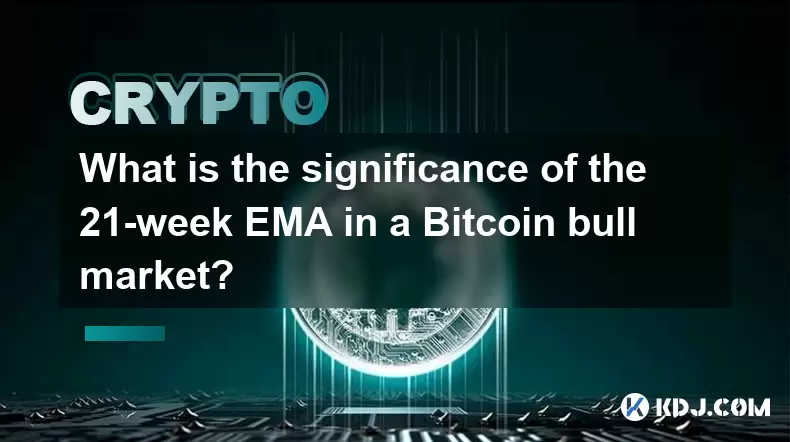
What is the significance of the 21-week EMA in a Bitcoin bull market?
Jul 10,2025 at 06:56pm
Understanding the 21-Week EMA in Cryptocurrency AnalysisThe 21-week Exponential Moving Average (EMA) is a technical indicator widely used by traders a...
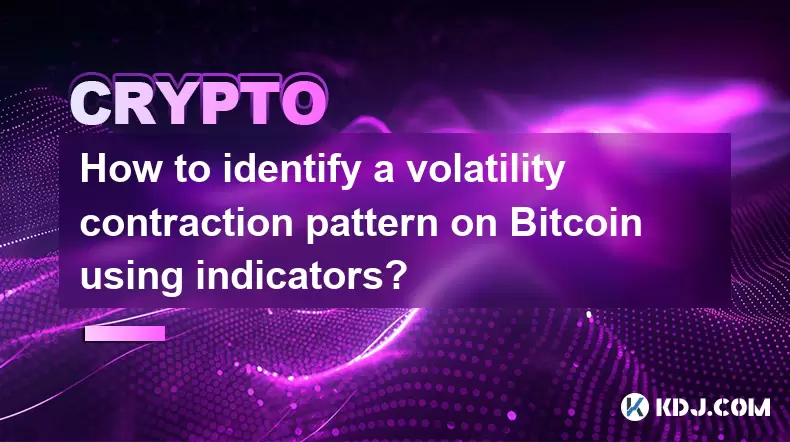
How to identify a volatility contraction pattern on Bitcoin using indicators?
Jul 07,2025 at 07:28am
What is a Volatility Contraction Pattern in Bitcoin Trading?A volatility contraction pattern refers to a phase where the price movement of an asset, s...
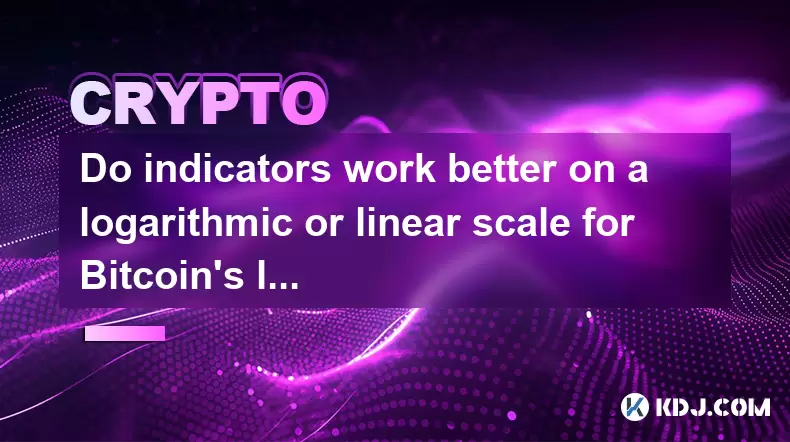
Do indicators work better on a logarithmic or linear scale for Bitcoin's long-term chart?
Jul 08,2025 at 01:42pm
Understanding Chart Scales in Cryptocurrency TradingIn cryptocurrency trading, particularly for analyzing Bitcoin's long-term trends, chart scales pla...

What is the Woodies CCI indicator and can it be used for Bitcoin?
Jul 04,2025 at 05:14pm
Understanding the Woodies CCI IndicatorThe Woodies CCI indicator is a variation of the traditional Commodity Channel Index (CCI), which was originally...
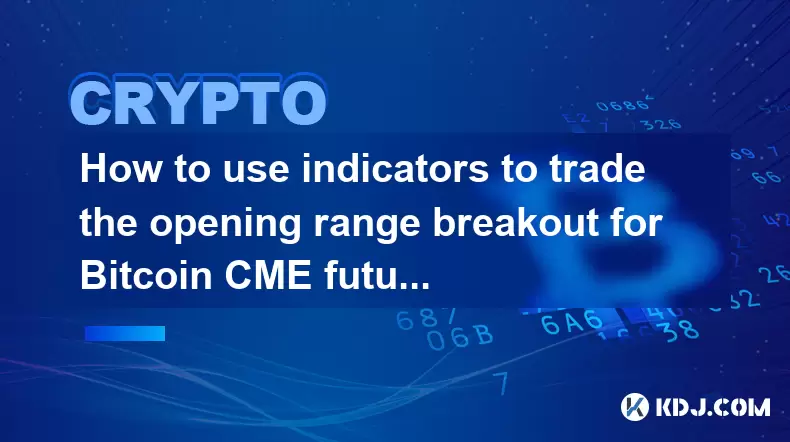
How to use indicators to trade the opening range breakout for Bitcoin CME futures?
Jul 05,2025 at 07:35pm
What Is the Opening Range Breakout Strategy?The opening range breakout (ORB) strategy is a popular trading technique used in both traditional markets ...

How to use the Relative Vigor Index (RVI) for Bitcoin trading?
Jul 07,2025 at 02:00pm
Understanding the Relative Vigor Index (RVI)The Relative Vigor Index (RVI) is a technical analysis tool used to assess the strength of price movements...

What is the significance of the 21-week EMA in a Bitcoin bull market?
Jul 10,2025 at 06:56pm
Understanding the 21-Week EMA in Cryptocurrency AnalysisThe 21-week Exponential Moving Average (EMA) is a technical indicator widely used by traders a...

How to identify a volatility contraction pattern on Bitcoin using indicators?
Jul 07,2025 at 07:28am
What is a Volatility Contraction Pattern in Bitcoin Trading?A volatility contraction pattern refers to a phase where the price movement of an asset, s...

Do indicators work better on a logarithmic or linear scale for Bitcoin's long-term chart?
Jul 08,2025 at 01:42pm
Understanding Chart Scales in Cryptocurrency TradingIn cryptocurrency trading, particularly for analyzing Bitcoin's long-term trends, chart scales pla...

What is the Woodies CCI indicator and can it be used for Bitcoin?
Jul 04,2025 at 05:14pm
Understanding the Woodies CCI IndicatorThe Woodies CCI indicator is a variation of the traditional Commodity Channel Index (CCI), which was originally...

How to use indicators to trade the opening range breakout for Bitcoin CME futures?
Jul 05,2025 at 07:35pm
What Is the Opening Range Breakout Strategy?The opening range breakout (ORB) strategy is a popular trading technique used in both traditional markets ...

How to use the Relative Vigor Index (RVI) for Bitcoin trading?
Jul 07,2025 at 02:00pm
Understanding the Relative Vigor Index (RVI)The Relative Vigor Index (RVI) is a technical analysis tool used to assess the strength of price movements...
See all articles

























































































